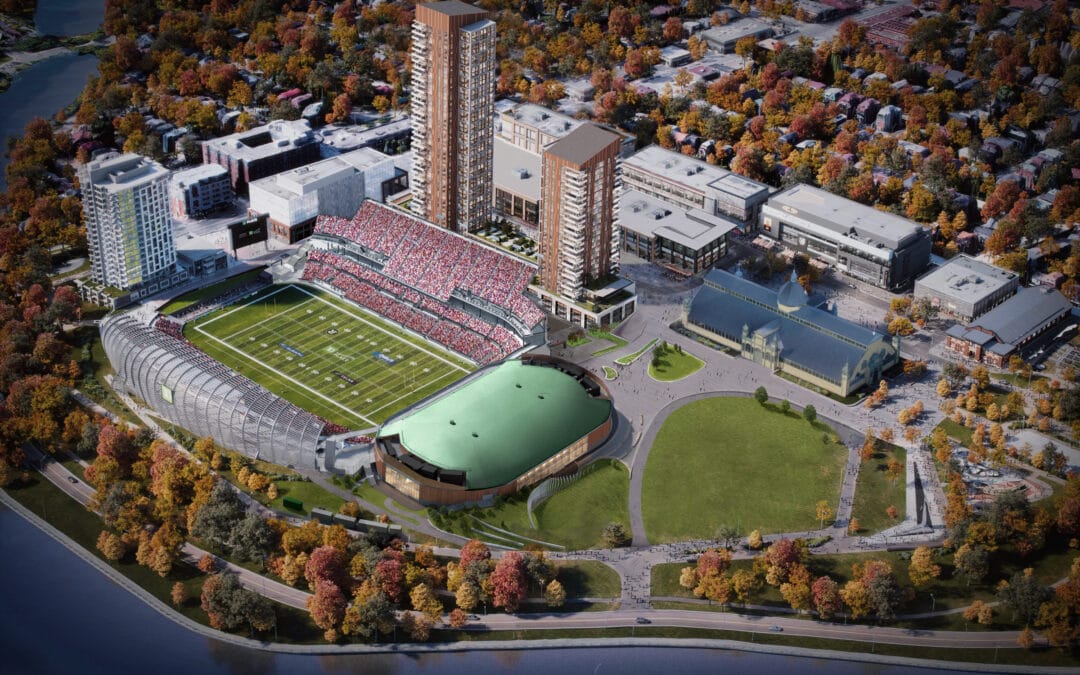I’ve received a few emails from residents with questions and opinions about Lansdowne Park. I haven’t made a decision yet on whether or not I will support the Lansdowne 2.0 project. We’re waiting for a report to Committee and Council, expected later this month. In the meantime, I’m sharing this list of myths, facts, and frequently asked questions about the project. You can follow the latest updates for this project at Engage Ottawa.
–Councillor Glen
Myth: Lansdowne 2.0 will cost taxpayers $419 million.
- Fact: Lansdowne 2.0 will generate revenues that will cover almost two-thirds of the total investment. The net cost to taxpayers will be approximately $146.6 million.
Myth: If we don’t do Lansdowne 2.0, we can just invest hundreds of millions of dollars in other priorities.
- Fact: If Lansdowne 2.0 doesn’t proceed, the revenues from the new development will not be generated. Therefore, the money will not be available to the City to invest elsewhere.
Myth: We don’t need to fix Lansdowne. The existing facility could last another 40 years.
- Fact: The north-side stands and arena are 60 years old and approaching obsolescence. They are deteriorating and past their functional life span. They also do not meet modern standards for energy efficiency and accessibility.
Myth: The City is subsidizing professional sports teams.
- Fact: The City of Ottawa owns the Stadium (TD Place), Arena (TD Arena) including all retail buildings, the Great Lawn and play structure, the Horticulture Building, Aberdeen Pavilion, and all the public spaces on the 38-acre site. The City is in a private-public partnership with Ottawa Sports and Entertainment Group (OSEG), where OSEG has a leasehold agreement to operate and maintain the assets. The City is not providing OSEG or the partnership any tax dollars.
Myth: Money spent on Lansdowne Park means money won’t be spent on other facilities in Stittsville, or on things like transit or housing.
- Fact: The investment in Lansdowne is not pulling money from other priorities. About 2/3 of the capital cost will be offset by new revenues generated by the project itself and the City’s partnership with the OSEG. These revenue streams are projected to generate $272.5 million. These revenues are conditional on the project proceeding and would not be realized otherwise. This approach enables the City to make a long-term capital investment without placing additional pressure on the operating budget or requiring increases in residential property taxes.
Myth: There has not been significant public consultation about Lansdowne 2.0.
- Fact: There has been more public consultation about Lansdowne 2.0 than almost any other project in the city’s history.
Myth: The arena is only 5,000 seats and will be too small.
- Fact: The capacity of the arena will be approximately 7,000 people for concerts and 6,600 for hockey. The size of the arena was determined through consultation with experts in professional and amateur sports and producers of major events, in order to serve the widest number of events possible. This is the ideal size for a facility of this nature and will lead to the maximum amount of usage by sports and event producers. Representatives from the Ottawa Charge and PWHL have spoken in favour of the new arena plan at a city committee.
Myth: Nobody goes to Lansdowne Park.
- Fact: Lansdowne as a site is thriving and employs 4,000 people, attracts more than four million visitors a year and contributes more than $300 million annually to Ottawa’s economy. In 2024, a record was set at Lansdowne for hosting 180 ticketed events. Total revenues for 2024 reached a record $59.5 million, up four per cent from the previous year. The City hosts over 200 additional non-ticketed events at Lansdowne each year.
Myth: Lansdowne 2.0 is a “done deal”.
- Fact: The previous Council directed City staff to bring forward the November 2023 report. While that report was approved by Council, there are still opportunities for City Council to approve or alter spending decisions on Lansdowne 2.0. City staff will report to Council in Q4 2025 on the final package of approvals, including the construction bid price, air rights bid price, legal agreements, and any required funding strategy amendments prior to construction.

